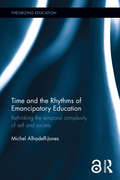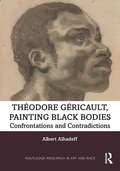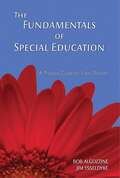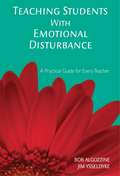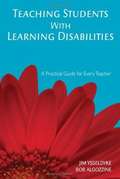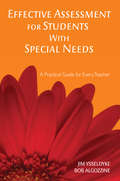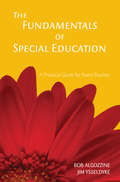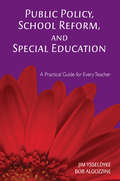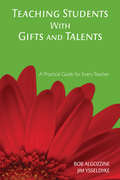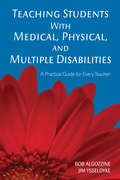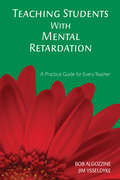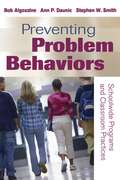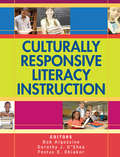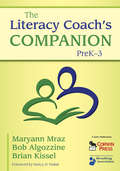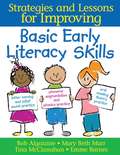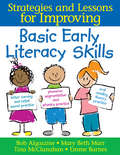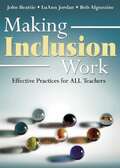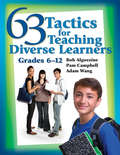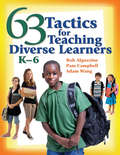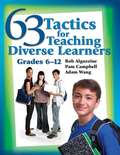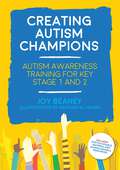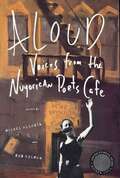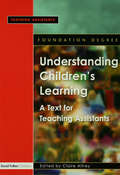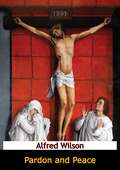- Table View
- List View
Time and the Rhythms of Emancipatory Education: Rethinking the temporal complexity of self and society (Theorizing Education)
by Michel Alhadeff-JonesTime and the Rhythms of Emancipatory Education argues that by rethinking the way we relate to time, we can fundamentally rethink the way we conceive education. Beyond the contemporary rhetoric of acceleration, speed, urgency or slowness, this book provides an epistemological, historical and theoretical framework that will serve as a comprehensive resource for critical reflection on the relationship between the experience of time and emancipatory education. Drawing upon time and rhythm studies, complexity theories and educational research, Alhadeff-Jones reflects upon the temporal and rhythmic dimensions of education in order to (re)theorize and address current societal and educational challenges. The book is divided into three parts. The first begins by discussing the specificities inherent to the study of time in educational sciences. The second contextualizes the evolution of temporal constraints that determine the ways education is institutionalized, organized, and experienced. The third and final part questions the meanings of emancipatory education in a context of temporal alienation. This is the first book to provide a broad overview of European and North-American theories that inform both the ideas of time and rhythm in educational sciences, from school instruction, curriculum design and arts education, to vocational training, lifelong learning and educational policies. It will be of key interest to academics, researchers and postgraduate students in the fields of philosophy of education, sociology of education, history of education, psychology, curriculum and learning theory, and adult education.
Theodore Gericault, Painting Black Bodies: Confrontations and Contradictions (Routledge Research in Art and Race)
by Albert AlhadeffThis book examines Théodore Géricault’s images of black men, women and children who suffered slavery’s trans-Atlantic passage in the late eighteenth and early nineteenth centuries, including his 1819 painting The Raft of the Medusa. The book focuses on Géricault’s depiction of black people, his approach towards slavery, and the voices that advanced or denigrated them. By turning to documents, essays and critiques, both before and after Waterloo (1815), and, most importantly, Géricault’s own oeuvre, this study explores the fetters of slavery that Gericault challenged—alongside a growing number of abolitionists—overtly or covertly. This book will be of interest to scholars in art history, race and ethnic studies and students of modernism.
The Fundamentals of Special Education: A Practical Guide for Every Teacher (Practical Approach To Special Education For Every Teacher Ser.)
by Bob Algozzine Jim YsseldykeThe busy educator's concise guide to the essentials of special education!In The Fundamentals of Special Education, authors Bob Algozzine and Jim Ysseldyke highlight the major concepts in special education, providing readers with a better understanding of the field, from disability categories and statistics to appropriate learning environments.Including a pretest, posttest, and key vocabulary terms, this practical guide answers the many questions educators have about special education, including: What is "special education" exactly, and why do we have it? How many students receive special education services and who are they? How are students identified for special education services? Where are students with disabilities taught? What is an Individualized Education Plan (IEP)? What roles do general and special education teachers play in addressing the needs of students with disabilities, and how do their responsibilities overlap? How does diversity influence special education? What about students who are gifted and/or talented?This excellent resource outlines a practicable approach to special education in all its many forms so that teachers can be prepared for the challenges they might face in the classroom.
Teaching Students with Emotional Disturbance: A Practical Guide for Every Teacher (Practical Approach To Special Education For Every Teacher Ser. #Vol. 11)
by Bob Algozzine Jim YsseldykeValuable insight and sound intervention strategies for addressing the needs of students with social and emotional problems!When a student is inattentive, extremely anxious, or has an outright tantrum in the classroom, ascertaining the exact cause may be difficult, but it is a critical step in reaching and teaching the students who exhibit these behaviors. In Teaching Students With Emotional Disturbance, Ysseldyke and Algozzine show readers how to recognize the cognitive, academic, physical, communicational, and behavioral characteristics of several forms of emotional disturbance and offer specific strategies for responding to anxiety issues, opposition and noncompliance, tantrums, disruptiveness, inattention, task avoidance, and more.Highlights include:* A pretest and posttest to help readers assess their understanding about the origins of social and emotional difficulties and how they are best addressed* Effective interventions and instructional adaptations for students who have emotional problems* Trends and issues currently influencing how students with social and emotional problems are taught* Key vocabulary termsThe authors offer a wealth of information and resources so that teachers can better identify the needs of students with emotional disturbance and help them succeed in the classroom.
Teaching Students with Learning Disabilities: A Practical Guide for Every Teacher
by Bob Algozzine James E. YsseldykeThe characteristics associated with LD, and practical teaching strategies proven to increase the success rate of students both inside and outside the classroom.
Effective Assessment for Students With Special Needs: A Practical Guide for Every Teacher (Practical Approach To Special Education For Every Teacher Ser.)
by Bob Algozzine Dr James E. YsseldykeDiscover what assessment methods you should be using, and how, when, and where they should be administered to ensure appropriate services are selected for all exceptional students.
The Fundamentals of Special Education: A Practical Guide for Every Teacher
by Bob Algozzine Dr James E. YsseldykeThis guide highlights major concepts in special education—from disability categories, identification issues, and IEPs to appropriate learning environments and the roles general and special educators play.
Public Policy, School Reform, and Special Education: A Practical Guide for Every Teacher
by Bob Algozzine Dr James E. YsseldykeCase studies illustrate how social, political, and economic factors affect special education practices and the distribution of limited resources to students with special needs.
Teaching Students With Gifts and Talents: A Practical Guide for Every Teacher
by Bob Algozzine Dr James E. YsseldykeThe authors help educators identify gifted and talented students, present effective instructional approaches such as enrichment and acceleration, and review characteristics related to exceptional students.
Teaching Students With Medical, Physical, and Multiple Disabilities: A Practical Guide for Every Teacher
by Bob Algozzine Dr James E. YsseldykeLearn about assistive technologies, helpful adjustments to school and classroom environments, and effective instructional modifications specifically designed to support students with medical, physical, and multiple disabilities.
Teaching Students With Mental Retardation: A Practical Guide for Every Teacher
by Bob Algozzine Dr James E. YsseldykeLearn what effective teachers do to support students with mental retardation in and out of the inclusive classroom! Providing special and general educators with highly effective strategies for enhancing the academic and social skills of students with mental retardation, and offering a pretest, posttest, and key vocabulary terms, this exceptional resource also discusses: Common causes of mental retardation Diagnosing mental retardation Cognitive, academic, physical, behavioral, and communicational characteristics Methods for improving students’ functional academic, social, self-care, and work skills Instructional approaches for students with severe disabilities Issues such as prevention of mental retardation and transitioning from school to work
Preventing Problem Behaviors: Schoolwide Programs and Classroom Practices
by Bob Algozzine Stephen W. Smith Ann P. DaunicIn today's increasingly diverse PreK-12 classrooms, problem behaviors can often interrupt instructional time and disrupt learning. Designed for 21st-century school leaders, administrators, behavior specialists, and classroom teachers, this research-based guide offers specific strategies and plans for preventing problem behavior at both the classroom and school level. Based on the premise that early response to problems can lead to better outcomes for students, the book's content is framed around four essential areas: foundations, intervention, collaboration, and evaluation. Within these areas, this accessible guide features: -The latest information on the science and practice of prevention -Reasons why conflict resolution, peer mediation, and bully-proofing are essential to prevention -Effective practices for teaching social skills to young children -Proven techniques for implementing schoolwide positive behavior support -Tools for using individual behavior plans to prevent problems -Ideas for home-school and community partnerships and culturally responsible teaching -Critical strategies for monitoring student progress and evaluating prevention practices -New, updated chapters, including information on preschool behavior support and RTI This valuable resource provides all the tools and strategies school leaders and teachers need to keep children focused on learning.
Culturally Responsive Literacy Instruction
by Bob Algozzine Dorothy J O'Shea Dr Festus E. ObiakorImprove reading achievement for students from diverse backgrounds with research-supported practices and culturally responsive interventions in phonemic awareness, phonics/decoding, fluency, vocabulary, and comprehension.
The Literacy Coach’s Companion, PreK–3
by Bob Algozzine Maryann E. Mraz Brian T. KisselA concise reference with essential protocols for successful early literacy coaching! This book highlights the expanding role of literacy coaches in implementing early and elementary literacy programs. The authors present user-friendly guidelines and evidence-based strategies for sustained professional development, protocols for classroom observations and teacher conferences, and vignettes offering solutions to common coaching challenges. This resource illustrates how coaching professionals can: Define an effective, proactive role in promoting literacy initiatives Strengthen content knowledge and coaching skills to support teachers’ efforts and students’ literacy development Collaborate with teachers and school leaders to establish productive learning communities Communicate their changing roles to administrators
Basic Early Literacy Skills: Strategies and Lessons for Improving
by Bob Algozzine Tina Mcclanahan Emme Barnes Mary Beth MarrBasic Early Literacy Skills provides all the resources necessary for educating readers from grades K-3.
Strategies and Lessons for Improving Basic Early Literacy Skills
by Bob Algozzine Mary Beth Marr Tina A. Mcclanahan Emma Mcgee BarnesDesigned for students of all levels, this hands-on guide offers research-proven strategies and structured lessons to teach essential skills for literacy success in Grades K–3.
Making Inclusion Work: Effective Practices for All Teachers
by Bob Algozzine Luann Jordan John BeattieLearn the best methods for teaching students with disabilities in an inclusive classroom!In today's classrooms, teachers must meet the educational needs of students of all ability levels, including students with disabilities. This invaluable resource offers elementary and secondary teachers a deeper awareness of "what works" when teaching students with disabilities in general education classrooms. Grounded in extensive special education research, this book will enlighten teachers with a greater understanding of special education students and how to teach them successfully.For teaching students with the most common disabilities in classes with their nondisabled peers, general and special education teachers alike will get the most current information on issues such as: Developing Individualized Education Programs Teaching reading successfully Managing behavior and motivating students Organizing classrooms and lessons effectively Using cognitive strategies successfully Making appropriate accommodations and modifications Assessing students, grading, and collecting data Working with parents and families Collaborating with other teachers and parentsOne of the greatest challenges teachers face today is how to ensure that all students succeed, regardless of their ability. Rooted in the best research and practice, this essential resource provides the tools needed to create an inclusive classroom and demonstrates how to teach classes successfully.
Preventing Problem Behaviors: Schoolwide Programs and Classroom Practices
by Bob Algozzine Dr Ann P Daunic Stephen W. SmithPrevention is the key to a successful school behavior plan! This research-based guide offers strategies and plans for preventing problem behavior at both the classroom and school level. The book focuses on four essential areas—foundations, intervention, collaboration, and evaluation—and features: Information on prevention science and practice Reasons why conflict resolution, peer mediation, and bully-proofing are essential to prevention Effective practices for teaching social skills to young children Proven techniques for implementing schoolwide positive behavior support Ideas for home-school and community partnerships Critical strategies for monitoring student progress Information on preschool behavior support and RTI
63 Tactics for Teaching Diverse Learners, Grades 6-12
by Bob Algozzine Pamela Campbell Jianjun Adam WangThis collection of 63 instructional strategies for teaching diverse secondary students includes teacher feedback, literature resources, and information for choosing appropriate strategies.
63 Tactics for Teaching Diverse Learners, K-6
by Bob Algozzine Pamela Campbell Jianjun Adam WangWith a practical, research-based model, this resource offers proven instructional methods that can be used across content areas and grade levels for students with or without disabilities.
63 Tactics for Teaching Diverse Learners, Grades 6-12: Grades 6-12
by Bob Algozzine Pam Campbell Adam WangThis collection of evidence-based instructional strategies enables general and special education teachers, novice or experienced, to address the learning needs of all students in diverse, inclusive classrooms. The authors provide a practical, research-based teaching model that focuses on planning, managing, delivering, and evaluating instruction for middle and secondary students with or without disabilities. Readers will find: Descriptions of how to teach students with different learning styles and needs Specific instructions for using each tactic, with helpful comments from practicing teachers and literature resources A wealth of reproducible worksheets Help for choosing appropriate strategies for specific subject areas, grade ranges, or learning difficulties Information to help teachers comply with federal mandates such as NCLB and the reauthorization of IDEA 2004 63 Tactics for Teaching Diverse Learners: Grades 6-12 allows teachers to match specific needs with an easily accessible set of solutions and enable all learners to achieve success in the classroom.
Creating Autism Champions: Autism Awareness Training for Key Stage 1 and 2
by Haitham Al-Ghani Joy BeaneyRaising awareness and understanding of autism has school-wide benefits, such as helping to improve the attitudes of pupils and staff and allowing children with autism to thrive socially, emotionally and educationally alongside their peers. This comprehensive resource provides a whole school programme for raising autism awareness and promoting inclusion. It includes training for staff in the knowledge and skills they need to support pupils, a sample school assembly, and lesson plans for teaching groups of pupils to be 'autism champions'. This programme also offers photocopiable worksheets and online presentations to use as part of the staff training, school assembly and peer awareness lessons. There is advice for involving children with autism and their parents in school activities. Easily adaptable for different age groups, this is a ready-made resource for schools committed to promoting autism awareness and whole school welfare.
Aloud: Voices From The Nuyorican Poets Cafe
by Miguel Algarin Bob HolmanCompiled by poets who have been at the center of the Nuyorican Poets Cafe in New York City, Aloud! showcases the work of the most innovative and accomplished word artists from around America.
Understanding Children's Learning: A Text for Teaching Assistants
by Claire AlfreyStructured to support teaching assistants, this pioneering textbook provides an academic underpinning to each of the key topics studied. The book: develops the theoretical knowledge needed to enhance work in the classroom; encourages students to reflect on their own practice; is in an ideal textbook format - full of tasks, questions, summaries and reading lists; and covers both primary and secondary years. Practical, easy-to-read and written specifically for teaching assistants, this book is also applicable for any trainee teachers or students of education.
Pardon and Peace
by Alfred Wilson C.P.Laymen's Guide to getting the full spiritual and mental benefits from Confession.Father Alfred Wilson, a pastor of souls and popular spiritual writer, wrote that the psychological benefits of Confession are of a piece with its moral benefits-and can only be fully enjoyed when the penitent approaches the sacrament in the proper spirit. In Pardon and Peace, originally published back in 1946, Father Wilson captivated audiences with insights like these:--Find yourself confessing the same sins over and over? Here's the reason--and helpful advice.--Types of inaccurate confession.--If your examination of conscience tends to be a lengthy ordeal then here's what you're doing wrong.--Two chief considerations for weighing the gravity of a sin.--Three conditions that must be present for a sin to be mortal.--Four guidelines for confessing venial sins.--Common excuses for avoiding Confession.--How to confess a sin of impurity.--"Nothing to tell"? You might not be searching properly."Answers all your questions, and not only that, any others you could possibly think of about Confession."--Caryll Houselander"A clear, sound, eminently sensible exposition of the why and how of one of Christ's often-neglected sacramental gifts. Both Catholics who seldom approach this sacrament and Catholics for whom it is an established part of their spiritual lives will find a lot that is helpful and inspiring here, as will priests and catechists."--Russell Shaw, Author, Why We Need Confession"An intelligent and compassionate explanation of the Sacrament of Reconciliation and of all aspects of penance and the forgiveness of sin. Very helpful for younger Catholics, for older Catholics, and questioning non-Catholics."--Fr. Benedict Groeschel, CFR, Author, Arise from Darkness
